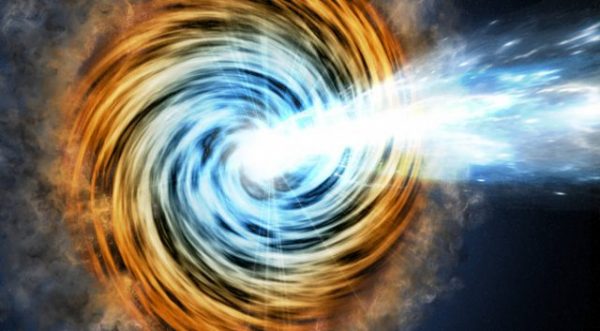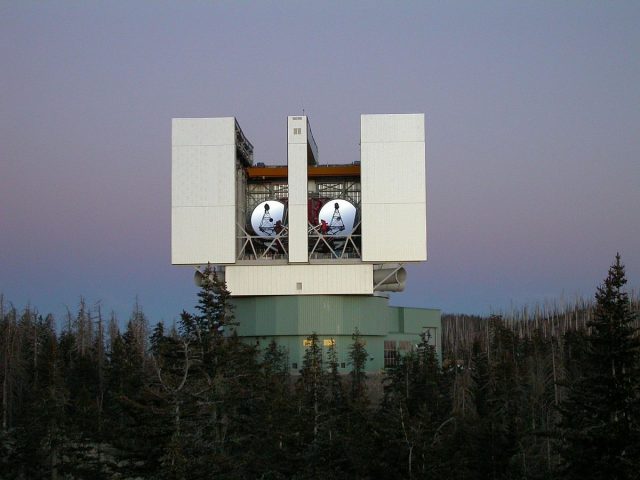Astronomers Spot Ancient Black Hole Beaming Radiation Toward Earth – ExtremeTech
This site may earn affiliate commissions from the links on this page. Terms of use.

The universe is crawling with black holes — we’ve even taken a picture of one. Despite that, these extreme stellar objects never stop surprising astronomers. A team from the University of Insubria in Italy spotted a supermassive black hole beaming a jet of energetic particles in our direction. That in and of itself isn’t terribly rare, but the age of this black hole is. Analysis suggests this object existed in the earliest years after the big bang, blasting particles at our corner of the universe for billions of years.
The University of Insubria used data from the Large Binocular Telescope (LBT) to discover the black hole, which is known as PSO J030947.49+271757.31. Like other supermassive black holes, this one is at the center of a distant galaxy. There are a few labels that can apply to objects like this. It’s an “active galactic nuclei” because the center is very bright across large swaths of the electromagnetic spectrum. This black hole is a specific class of active nuclei called a blazar. That distinction simply means that the beam of radiation pointed in the direction of the observer, which is all of us on Earth. An active galactic nuclei that isn’t aimed at the observer is known as a quasar.
The spectrum of PSO J030947 was clearly indicative of a blazar when it appeared in the team’s data. However, the redshift came as a surprise. This object has a redshift value of 6.1, the largest ever observed for a black hole. That tells astronomers that PSO J030947 is about 13 billion light-years away. Therefore, it was out there firing a beam of radiation toward Earth less than a billion years after the big bang.
This black hole could be a boon for scientists interested in studying the early universe. The beams lancing out through space are a result of matter falling into the accretion disc around the black hole. The signals from blazars like PSO J030947 can carry information about the region of space they call home. According to the team, there could 100 other objects like PSO J030947, but they might all be quasars with beams pointed in different directions.
The current study focuses on the black hole’s approximate age and location. Additional studies will have to determine how large it is and what the radiation can tell us about the universe 13 billion years ago.
Now read:







